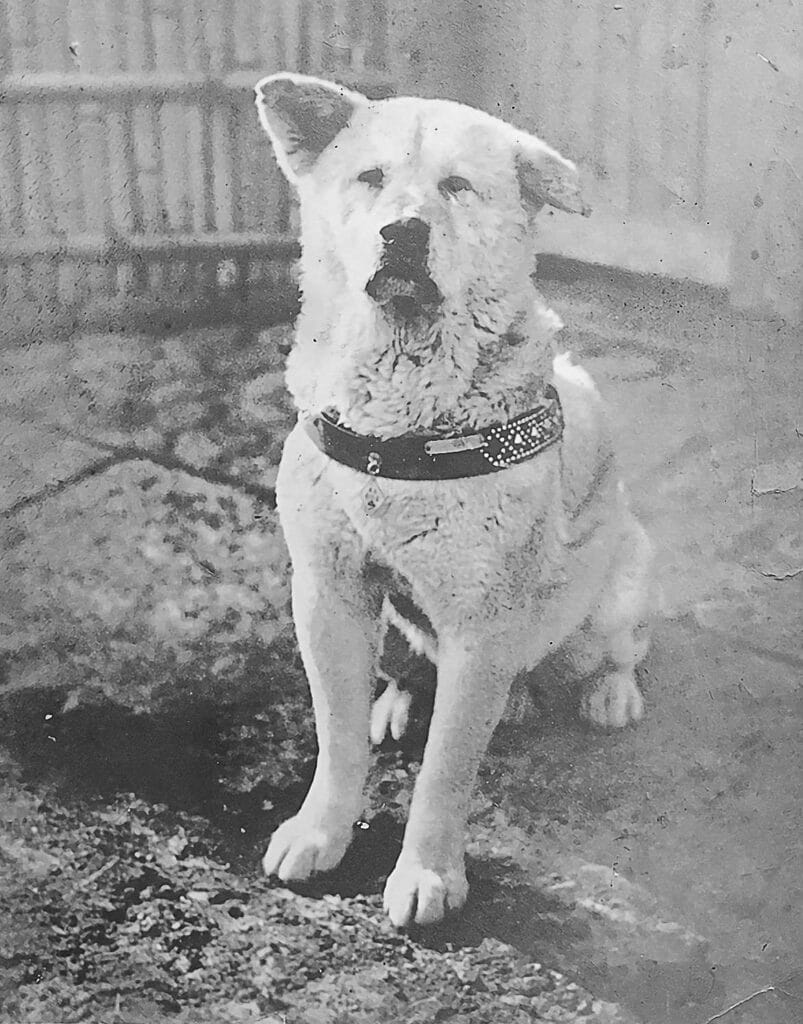
Quick selection
Remarkable animals
They say that dogs are the most loyal animals; to anyone who shares their life with a furry companion they can most likely testify to this being the case. Sure enough, over the past 100 years or so stories have been shared detailing the exploits of some of our truly remarkable four-legged friends. In Japan there is one story that stands above all and is celebrated and remembered nearly 100 years later — the story of Hachiko the dog.
It may be strange to some, however, I would hazard a guess that the name Hachiko is known to many residents of Japan, or at the very least the 14 million residents of Tokyo. This is because the story of Hachiko is a real tear-jerker and one that exemplifies almost unimaginable loyalty and dedication.
This is the story — and legacy — of Hachiko the dog, Japan’s most famous canine.
A lifelong wait
In the northern reaches of the Tohoku region, in the city of Odate; a somewhat rural and less densely populated part of Japan, especially in 1923, the dog Hachiko was born. A pure breed Akita inu with a white coat that somewhat matches the wintery conditions of the surrounding Akita prefecture in which this particular breed of Japanese dog originates.
However, Akita prefecture wouldn’t be his home for very long.
At the same time, further south in the Japanese capital of Tokyo, Hachiko’s future owner Hidesaburo Ueno was teaching at the Tokyo imperial university. At some point in the following year of 1924 the pair met and both returned to Tokyo where they remained for the rest of their lives. For the ensuing year Hachiko would eagerly await Ueno’s return from work by meeting him every day at Shibuya station.
Except that one day, specifically May 21st 1925, Hidesaburo Ueno did not return. Hachiko waited at the station as per usual unaware that his owner had suffered a brain haemorrhage and had died whilst lecturing at the university.
It is what Hachiko did next that resonated and inspired the country’s populace to the extent of which he is still remembered today.
The following day Hachiko once again went out to Shibuya station to wait for his owner. However once again Ueno did not appear. Hachiko continued to wait at the station every day, not just for a few days, weeks, or even months — Hachiko did this for the rest of his life. He continued to wait for nine years.
Nine whole years.
This was Hachiko’s life until the day he died in 1935 at the age of 11. This means Hachiko the dog spent over three quarters of his entire life waiting for his owner to return.

Hachiko’s legacy and remembrance
If you were to find yourself outside Shibuya station today, you would see a statue dedicated to the memory of Hachiko. There are in fact a total of four prominent statues across the country: two in Tokyo, located outside Shibuya station as well as outside the university of Tokyo, and two in the city of Odate, Hachiko’s hometown. You can find these in front of Odate station, replicating the one found in Tokyo, as well one in front of the Akita dog museum.
These are but one way that the life and dedication of Hachiko the dog is remembered.
In a true mark of respect, on march the 8th (the day that Hachiko died) an annual ceremony takes place to remember his life. Let’s be clear here for a second, this isn’t usually a small occasion. Every year hundreds of people turn out to fill the square surrounding the statue of Hachiko located outside Shibuya station. In truth, it can be quite humbling to see, as although Hachiko was ‘just a dog’ it’s his character that is admired and respected.
However, Hachiko’s legacy doesn’t end there. Smaller acts of tribute can be seen in numerous parts of Japanese society.
There have been museum and photo exhibits, Hachiko themed products and public services most of which can be found in and around the Shibuya district of Tokyo. Even outside of Japan the story of Hachiko has been portrayed and retold in numerous forms. There have been cameo appearances in tv programmes as well as video games but the most notable example would be in the film ‘Hachi: a dog’s tale’ released in 2009 and the subsequent statue unveiled in Rhode Island.
It’s safe to say Hachiko had a lasting impact far and wide and a legacy that will last a lifetime.

Final thoughts
The image of Hachiko the dog eternally waiting is certainly an image that evokes a feeling of sadness and heartbreak, however at the same time it can also be inspiring. There is a hopefulness to his actions mixed together with a determination to keep returning to the spot where he would meet his owner where one day he might return.
Maybe most importantly, it makes us reflect on our own lives and actions. How many of us would do something similar? How do humans compare? The story of Hachiko shows a kind of character that we all try to achieve, but very few actually achieve.
They say that ‘dogs are a man’s best friend’ but is it not also the case ‘man is dog’s best friend?’
Nathan

